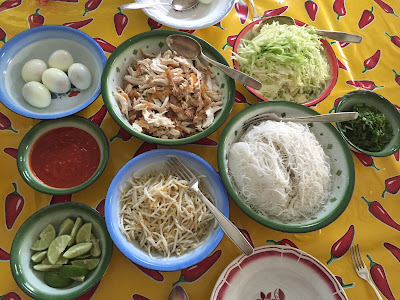For months, few words have come from my chilled fingers onto my screen. My brain is a mess, like my life. Why did we have this ominous idea to renovate a house? The thing is, if I have to live through those chilly Dutch winters, I prefer to do so in comfort, and ideally without raking up a ginormous gas bill and making heating unnecessary in the long term because climate change will turn Northern Europe’s climate Mediterranean. What I need is insulation.
But the type of house I like – charming, old, ramshackle – tends to be badly insulated, which is fine in the tropics, but staying in a draughty rental house made me realise that that wasn’t for me as long as I was in Northern Europe. We fell for a house with large sunny garden, directly by the dunes and very close to the sea, but, as to be expected, it was in a deplorable state. We ended up tearing it down to just a few bare walls. Honestly, building a new house from scratch would have been easier, but the front of the house was a protected cityscape. We never renovated a house before, and I can tell you, I never will again. Even though we don’t do the physical work ourselves. I won’t regale you with all the details, it would take a full novel, but as the contractor said, Murphy’s law applies to this project. Everything that can go wrong, does go wrong. That the contractor likes to deny their own culpability in all of that is something I also won’t discuss here. But as we are nearing the second anniversary of the purchase of said house, I would really like to know whether we will be living there this coming Christmas. The problem is that even though there is light at the end of the tunnel, it just doesn’t seem to get any closer. Quite the contrary. When we packed up our rental house end of July, we thought it was for just a month, hence all our winter clothes went into storage. Our moving deadline is currently set for the end of October. We have been housesitting, staying with my parents and in several holiday rentals. We are safe and dry so can’t really complain, but my patience is running out. And I do really start to miss my thermal underwear.
Maybe there is a message in here – that buying and renovating a house isn’t for a perpetual nomad like me. It feels like the whole world is conspiring against us, making sure that this house never gets finished. I have always loved being on the move, being a nomad, exploring new places. But moving around in the same city, I find no joy in that. It’s not an adventure, it’s simply a nuisance. Many a time I have threatened to sell the whole thing and move back to Asia. We still might. But the thing is: We can’t really move abroad until the bloody thing is finished.




